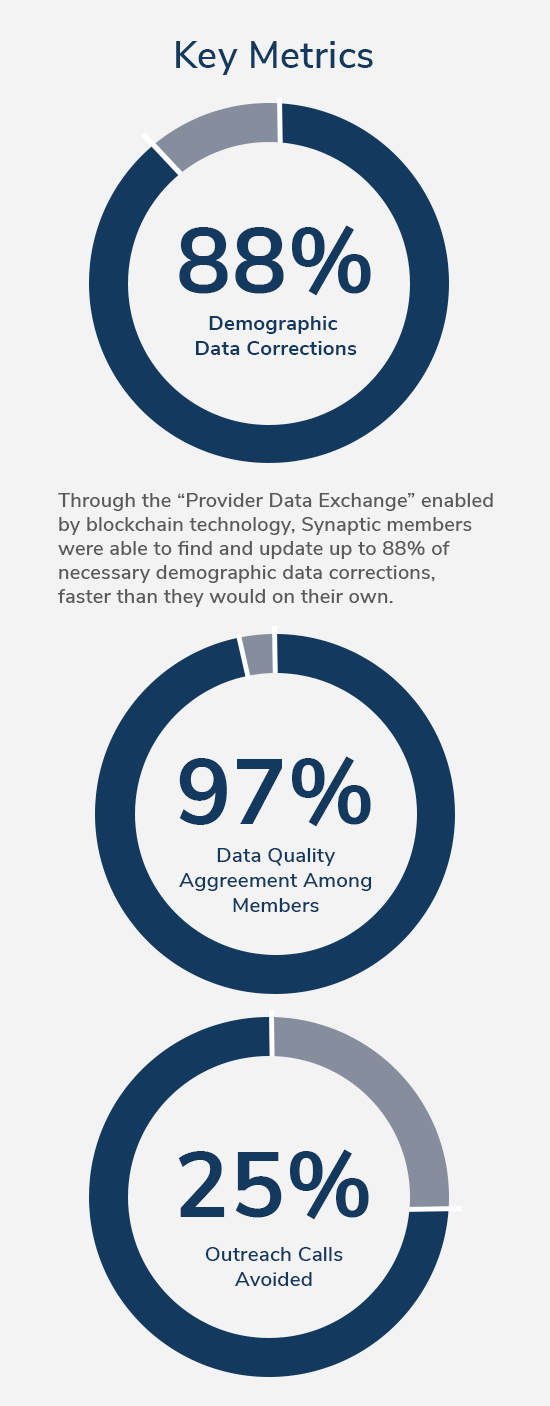It’s a true alliance
Our members share the work and the benefits of creating a complete, shared and trusted source of data across healthcare. Each new payer, provider, or data supplier that joins increases the ROI for the others. We are currently focused on one of the costliest and preventable challenges in healthcare, maintaining accurate provider directories.
- Federal regulations require that insurers maintain directories that contain updated demographic information about providers, such as name, address, specialty, and phone number.
- Roughly $2.1 billion is spent annually across healthcare chasing and maintaining provider data.
- CMS found that 52% of provider directory locations listed had at least one inaccuracy.
Today, Synaptic Health Alliance’s provider data exchange is live in Texas, Colorado, Florida, Michigan, New York, Ohio, and Tennessee and is rapidly expanding as new members join. Alliance members have loaded more than two million records to date.
How it works
